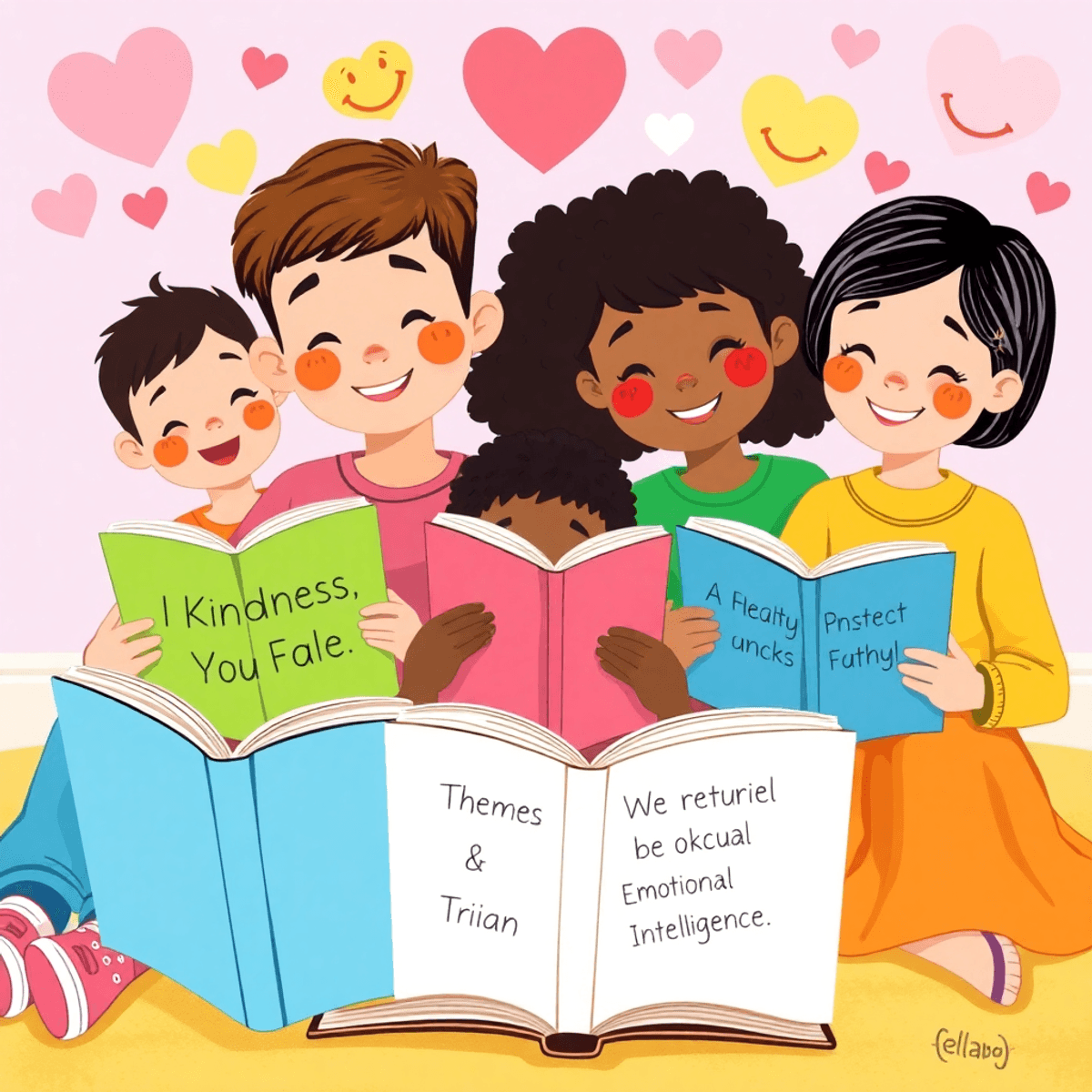
Early childhood is a crucial period for emotional, cognitive, and language development. Here are 10 engaging books that will support your child’s growth while making reading time both fun and educational.
1. “The Color Monster” by Anna Llenas
Age Range: 2-5 years
A delightful book that helps children understand and identify their emotions through colors. Each emotion is represented by a different color, making abstract feelings more concrete for young minds.
Reading Tips:
- Ask your child to share times when they felt like each color
- Create emotion jars with colored water
- Practice making the monster’s different emotional expressions
- Use the colors in daily conversations about feelings
2. “Press Here” by Hervé Tullet
Age Range: 2-4 years
This innovative interactive book teaches cause and effect while engaging children’s imagination. It’s like a touchscreen in paper form, perfect for developing motor skills and following instructions.
Reading Tips:
- Exaggerate your movements when following the instructions
- Count the dots together
- Create your own “press here” games off-book
- Let your child lead the interactions
3. “The Very Hungry Caterpillar” by Eric Carle
Age Range: 2-4 years
A timeless classic that teaches counting, days of the week, healthy eating, and transformation. The story’s repetitive structure helps build vocabulary and prediction skills.
Reading Tips:
- Use finger puppets to act out the eating
- Count the foods together
- Talk about healthy vs. unhealthy foods
- Discuss the butterfly’s life cycle
4. “We’re Going on a Bear Hunt” by Michael Rosen
Age Range: 3-6 years
This adventurous tale builds problem-solving skills and teaches children about overcoming obstacles. Its rhythmic text makes it perfect for interactive reading.
Reading Tips:
- Act out the movements as you read
- Make the sound effects together
- Create your own obstacle course at home
- Discuss different ways to face challenges
5. “The Gruffalo” by Julia Donaldson
Age Range: 3-6 years
A clever story about wit and bravery that helps develop critical thinking skills and teaches children about confidence and problem-solving.
Reading Tips:
- Use different voices for each character
- Discuss the mouse’s clever solutions
- Create your own scary-but-not-too-scary monster
- Talk about times when being clever is better than being strong
6. “Where the Wild Things Are” by Maurice Sendak
Age Range: 4-6 years
This classic explores emotional regulation and imagination while helping children understand that it’s okay to have big feelings.
Reading Tips:
- Practice the wild rumpus dance
- Discuss what makes us feel wild sometimes
- Draw your own wild things
- Talk about ways to calm down when feeling wild
7. “Don’t Let the Pigeon Drive the Bus!” by Mo Willems
Age Range: 2-6 years
A humorous book that teaches children about rules, persistence, and handling disappointment through a very persuasive pigeon.
Reading Tips:
- Let your child respond to the pigeon’s pleas
- Discuss why some rules are important
- Role-play similar situations
- Talk about appropriate ways to handle disappointment
8. “Brown Bear, Brown Bear, What Do You See?” by Bill Martin Jr. and Eric Carle
Age Range: 2-4 years
This pattern-based book helps develop color recognition, animal identification, and prediction skills while building vocabulary.
Reading Tips:
- Point to each animal as you read
- Make the animal sounds together
- Create your own versions with different animals
- Practice color identification in daily life
9. “The Wonderful Things You Will Be” by Emily Winfield Martin
Age Range: 2-5 years
A beautiful book that celebrates individuality and potential, helping build self-esteem and emotional awareness.
Reading Tips:
- Ask your child what they dream of becoming
- Point out their unique qualities
- Create a “wonderful things” drawing together
- Make connections to their daily achievements
10. “Little Blue Truck” by Alice Schertle
Age Range: 2-4 years
A heartwarming story about friendship and helping others that teaches social skills and the value of kindness.
Reading Tips:
- Make vehicle and animal sounds together
- Talk about ways to help friends
- Practice taking turns
- Discuss the importance of being kind
Conclusion
Reading these books with your child provides more than just entertainment – it creates opportunities for learning, emotional development, and bonding. Remember to:
- Make reading time interactive and fun
- Ask open-ended questions about the story
- Connect the stories to real-life experiences
- Be consistent with daily reading sessions
- Follow your child’s lead and interests
The key to making these books most effective is regular engagement and creating a positive association with reading. As you explore these stories together, you’ll notice your child developing new vocabulary, emotional awareness, and critical thinking skills naturally through the joy of reading.